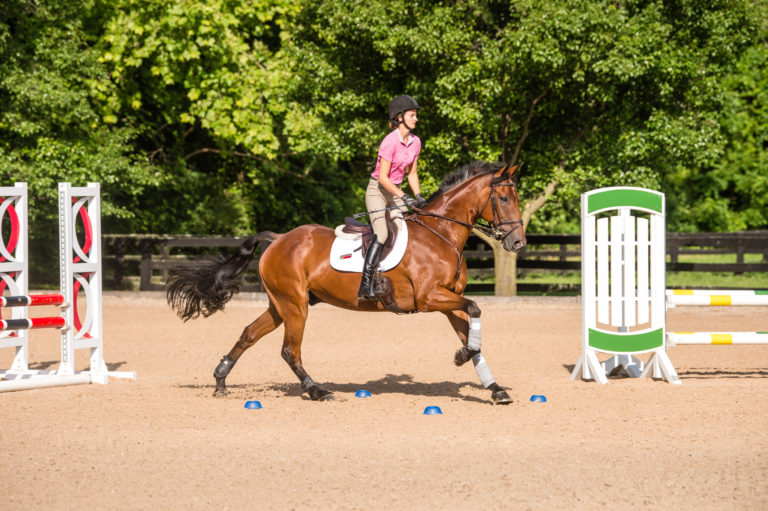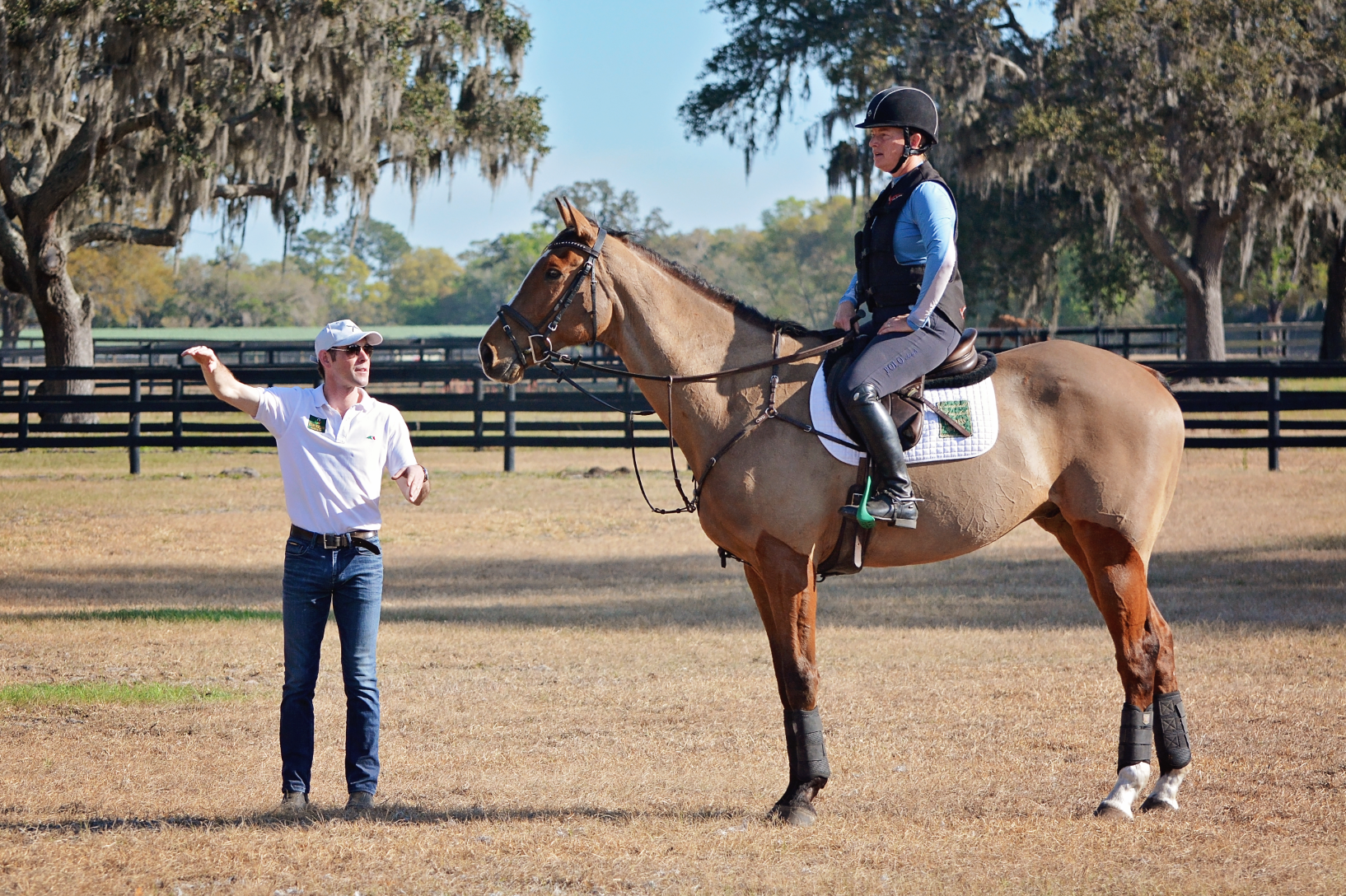
Not all top riders are effective instructors, but Irish Olympian Joseph Murphy is known for his prowess at both riding and teaching. Ireland’s leading event rider for the last five years, he’s a highly sought-after clinician who brought his popular teaching style to the U.S. this year for the first time.
Horsepower Equestrian, the winter base of U.S. four-star event rider Liz Halliday-Sharp in Ocala, Florida, served as an ideal facility for three days of intensive cross-country lessons set against a backdrop of grand oak trees draped in Spanish moss. Riders of all levels came away from the clinic with a considerable confidence boost and at least a few colorful Irish phrases added to their vocabulary.
Known for his laid-back personality and good-natured sense of humor, Joseph kept the riders laughing but made it clear he expected them to rise to the occasion. Each group typically started by warming up over small logs and tables—first jumped individually on straight lines, then strung together in sequence on angled lines.
The riders thought they were simply warming up their horses, but in fact Joseph was quietly cataloguing each pair’s strengths and weaknesses. Although the groups were separated by level from Beginner Novice up to Intermediate, Joseph made his own observations about what he believed each horse and rider to be capable of achieving and challenged them accordingly.
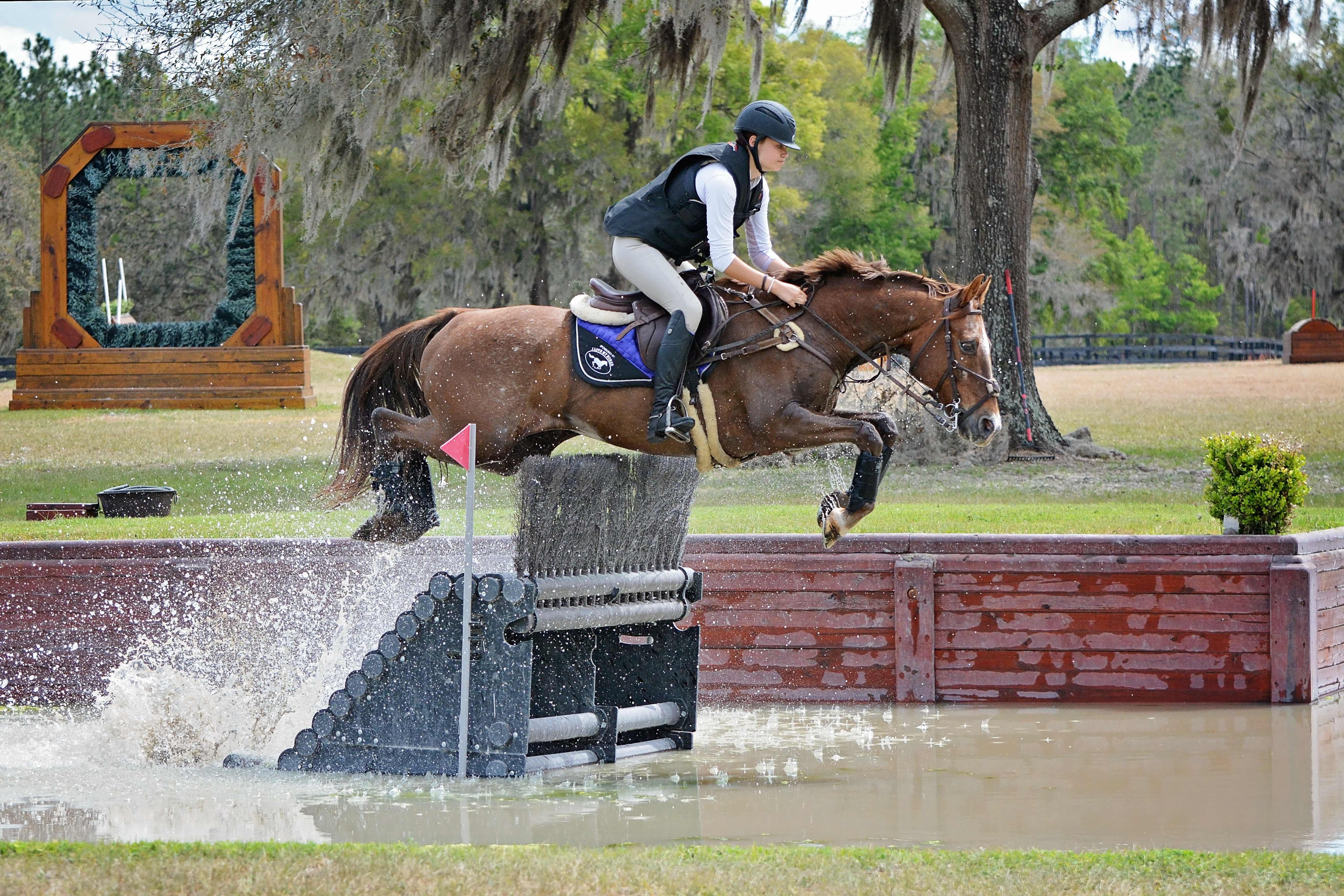
Understanding Fence Types
Learning how to jump different fences based on their shapes is an essential part of a rider’s cross-country education, and Joseph emphasized the importance of understanding fence mechanics right from the start. He diligently explained the required speed, approach and takeoff each time he introduced a new fence in the clinic.
Fences set at a very upright angle require a careful, controlled approach, he explained. “If you come to a fence that is very upright—it could be a gate or a step up to a bank—you need to come in an uphill balance with an upright body to allow the horse’s front end to come up and reach up over the fence. That gives his forearm loads of room so he can stay careful and stay off that type of fence.
“It’s a very different feeling if you’re riding down to a brush, or a chase fence as you call it in Ireland. The profile is very slanted and there’s a nice takeoff rail. To come galloping to that, there isn’t a big priority for where you take off—anywhere at the front of a fence like that is very forgiving.”
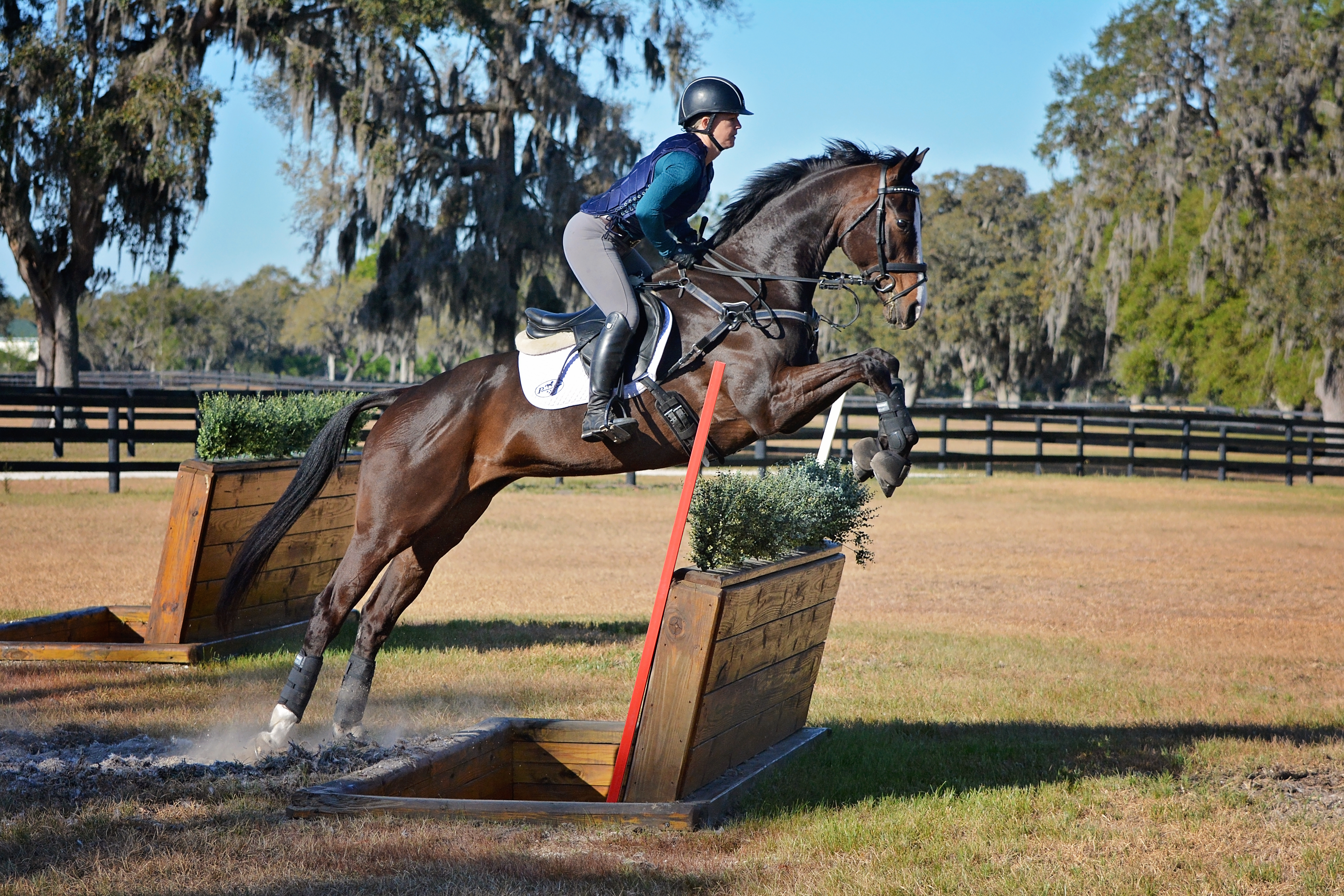
Some riders in the clinic had never jumped a ditch-and-wall: a ditch set directly in front of an upright wall, jumped together in a single effort. The idea of jumping this “rider frightener” rattled more than a few, but Joseph constantly sought to instill confidence in the riders by talking through the mechanics of the fence and type of approach that would guarantee success.
When one rider commented that the ditch-and-wall was “scary,” he responded, “Scary? With your ability, it’s no problem. You have to ride down to the base of the jump and be brave.”
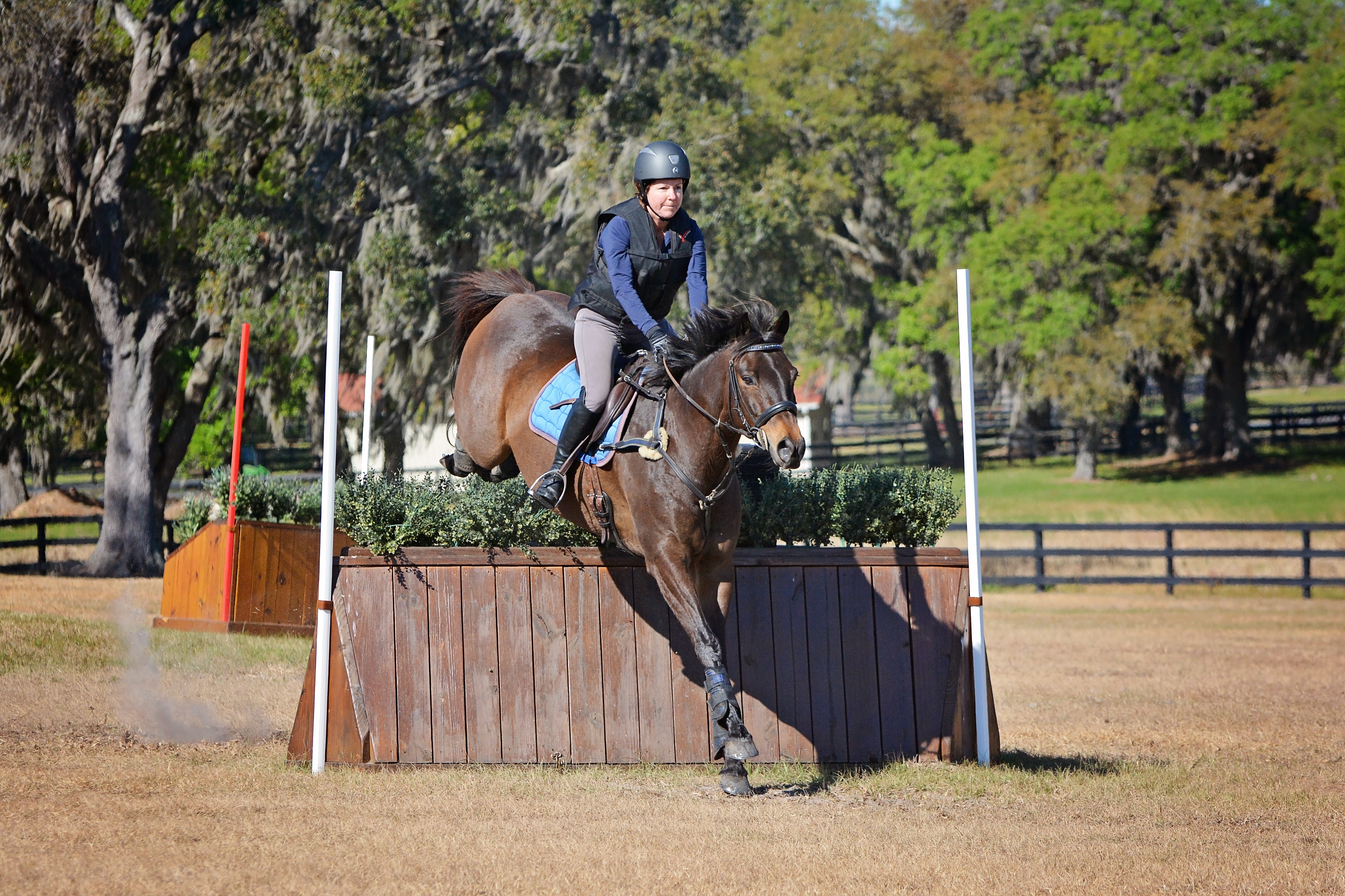
Find the Line, Hold the Line
Joseph used turning questions, related distances and angled combinations to keep horses and riders on their toes. “Find the line, hold the line” surfaced as a key theme of the clinic, and he repeatedly stressed that the burden is on the rider to execute accurate straight lines at the correct pace.
Straightness has to come first before jumping angles, he said, ensuring that each rider could hold the correct straight line before progressing to angled combinations. “The line, the body position and the speed—check all the boxes to get the right result. In your own head try to ride the straightness of the line. When you’re on the line, it’s the horse’s job to go and jump it.”
Joseph added plenty of skinny fences into combinations, so finding and holding the line became all the more crucial as questions increased in technicality. For riders whose horses ducked out at skinnies, he placed poles on either side of the jump—resting one end of each pole on the edge of the jump and the other angled away in a jump cup of a nearby standard—to help the horse understand the question.
“For me it’s very important that you don’t keep exhausting yourself and the horse trying to do it and not really making any progress. At that moment, you must become very calm and think about the horse. Does he understand the question? What’s the root of the problem at that moment? I go back to the basic rules of riding that type of fence. Am I on the correct line? Am I in the correct position so if I have to give him a kick or if he jumps really big I’m not going to affect his jump?”
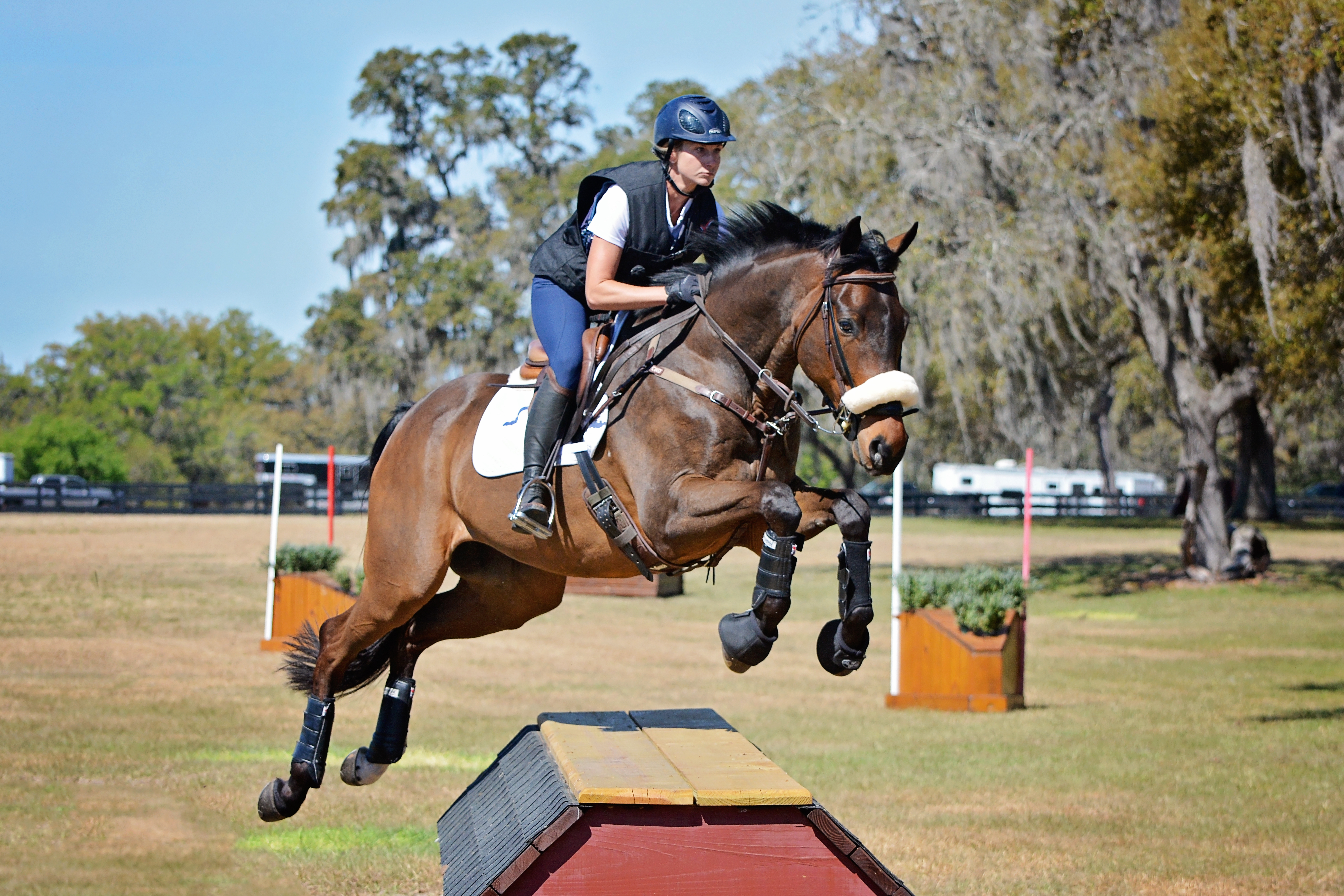
Developing Feel
Joseph underscored the importance of riding cross country based on feel rather than obsessing over stride numbers. If a rider asked about the striding in a combination, he would seldom respond with a number. Instead he instructed, “Let your eye do the calculation, then make your decision. You know from feeling what it’s supposed to be.”
If riders didn’t get to a good takeoff spot and had an awkward jump, Joseph asked them what they thought went wrong, engaging in a discussion and encouraging thoughtful reflection before sending them off to try again. Identifying the source of the problem—such as an underpowered canter, crooked approach or not enough leg—can ultimately help eliminate awkward jumps and potential falls.
Even if you are getting away with such risky jumps, Joseph said, “It’s like taking money out of the bank. When you keep taking money out of the bank, eventually you’re overdrawn and in a bad place. You need to keep putting money in the bank until you’re rich.”
If a horse and rider struggled with refusals or runouts at a certain type of fence, Joseph would calmly stop them, discuss what went wrong and talk through a plan to address the issue. Much less concerned about the riders’ mistakes than they were, he explained it is important to embrace mistakes as part of the learning process for both horse and rider.
“In the end it must be a 50–50 partnership with the horse and the rider. At any given time, if the rider is working more than 50 percent, this means that there’s always going to be a risk of having a runout or fall because you’re not exactly in tune with your horse.”
He emphasized the effectiveness of using repetition in training so the horse can understand the question and want to jump between the flags and the rider can understand how a jump should feel when ridden correctly.
“You have to come to the fence with the right speed and right position and have the horse lock onto that fence. That’s my reason for not worrying about making mistakes in the beginning. Once you practice it over and over, the horse won’t make mistakes because it’s in his vocabulary and he wants to do it for himself. It’s a perfectly tuned partnership then, once the horse has the genuine idea for wanting to do what’s in front of him.”
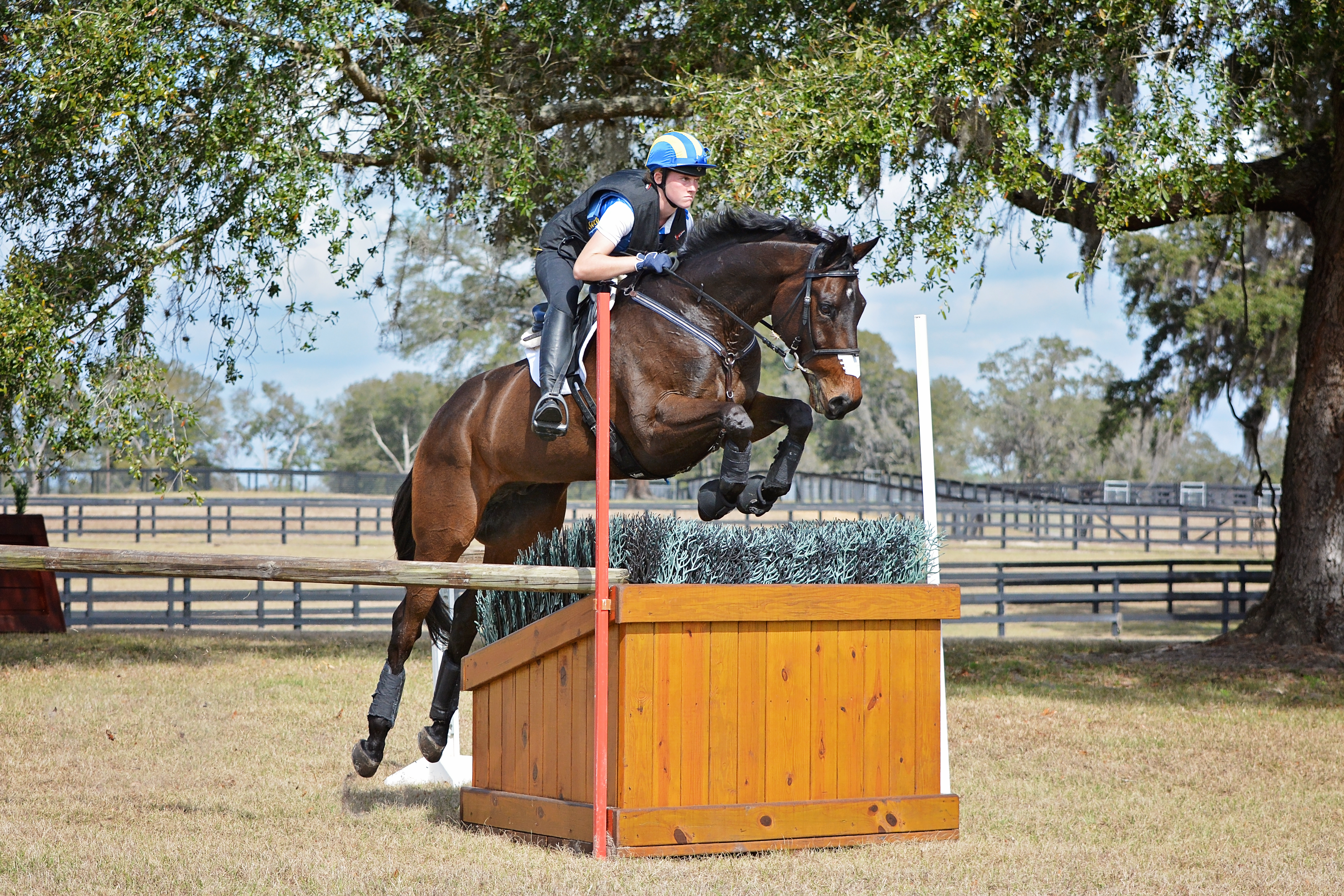
Make the Impossible Possible
Confidence emerged as the overarching theme of the clinic. Joseph stressed that building mental strength is just as imperative as developing riding skills, especially on cross country where riders have to think quickly and make split-second decisions.
“You must think very strong in yourself as a rider. Think you can do it, and if you can’t, find a way to make it happen. Some people are more naturally confident than others, but if you’re not, this is something that becomes more of a focus. Push yourself a little more. That’s what creates the mental strength and mental confidence.
“At first you look at these exercises and they seem impossible. Taking yourself through that journey shows you that it is possible—and then it becomes more and more possible.”
Practicing cross-country skills in a clinic format helps you develop this mental strength, he said, so you can better cope with the added stress of competing at events. “It’s like stage fright—you know the song, you know the dance, but it’s the occasion. That’s why I like this as practice. It takes the pressure off on the big occasion.”
Joseph also emphasized the value of constant self-evaluation in riding. “As a rider you always want to keep thinking, ‘Am I making the right decisions by the horse?’ Your subconscious mind stores knowledge from years of riding, so it’s important to be fit and focused on the job and have trained all types of scenarios with your horse so that the knowledge is available to you at all times.”
Ultimately, riding must be approached with the right attitude and mindset, he said. “You have to walk around with a pep in your step, show the attitude that ‘Yes, I want to put the effort into it.’ You have to become strong-minded even if it’s for that moment. You have to click into gear.”
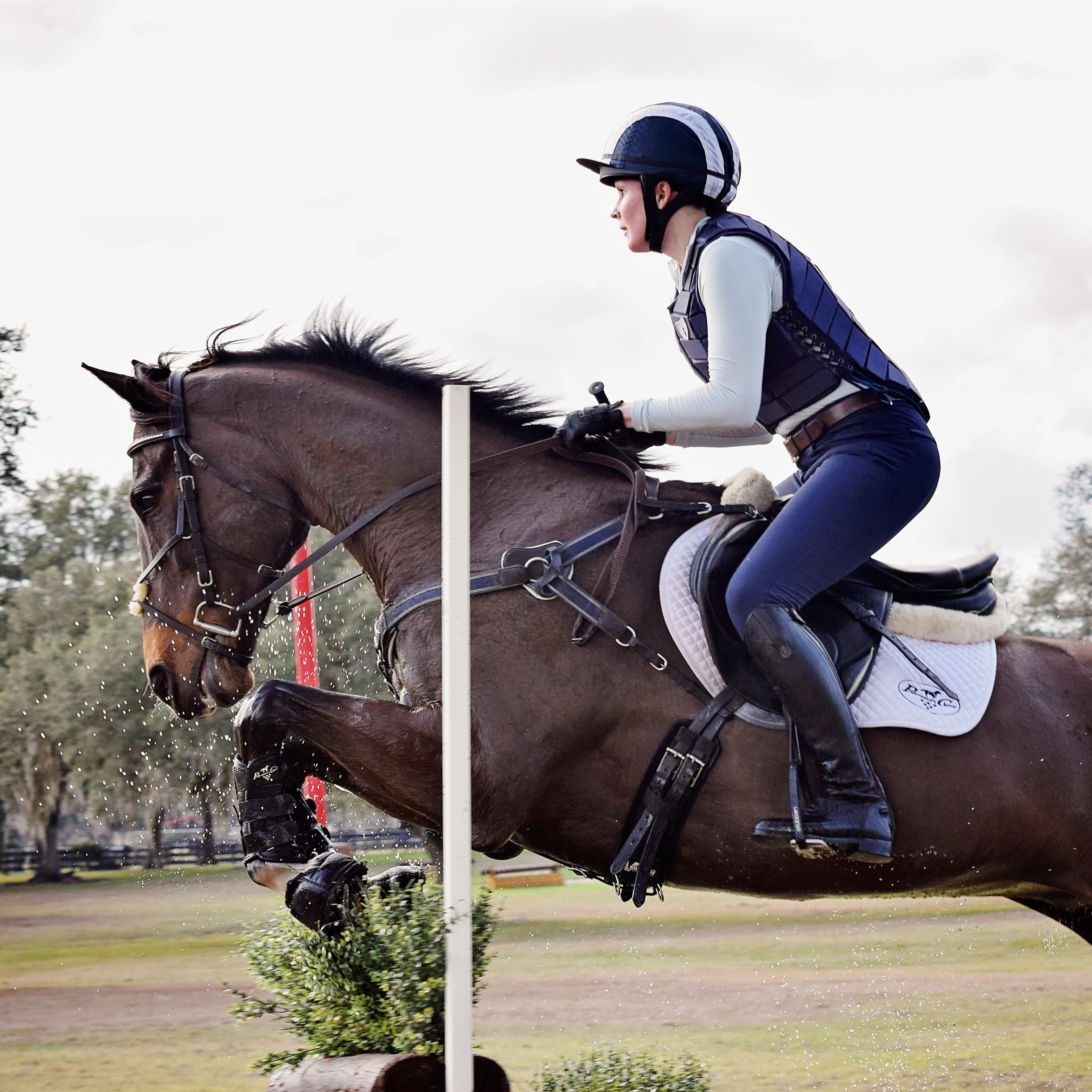
Belief is Half the Battle
The Irish are known for their bold style of cross-country riding, and Joseph brings that boldness to the way he teaches as well. While honing his own mental strength with the help of Olympic performance psychologist Charlie Unwin, Joseph mastered the art of quickly and effectively building trust with students and then finding the precise moment to push them.
It’s not a question of whether or not riders will be pushed out of their comfort zone when riding in one of Joseph’s clinics—they absolutely will. One would think this is a big ask in a 90-minute cross-country lesson, but time and time again Joseph had riders tackling tricky questions and jumping technical combinations they never thought possible.
I am one of these success stories. As an adult amateur eventer, I balance a full-time career in journalism with competing Jimmie Schramm’s former Advanced partner Bellamy, who now packs me around at Training level. Bellamy and I had completed one recognized event at Training level prior to riding in Joseph’s clinic. I was just as green as many of the riders in the clinic, but after hearing him gently scold others to “forget about your greenness and start riding,” I knew it was time to step up.
Joseph saw something in me I couldn’t see in myself. It was like he had a sixth sense about all the ways I doubted myself as a rider and made a point of proving me wrong. As he gradually increased the technical difficulty of the combinations we jumped throughout my lesson, everything I thought I couldn’t do suddenly started to seem within the realm of possibility.
My lesson culminated in jumping a combination of two sharply angled brushes set on two strides following a mound. If Joseph had told me at the beginning of the lesson I would be jumping that by the end, I would have told him “never in a month of Sundays”—as the Irish would say. He told me that “belief is half the battle.” After riding in one of his clinics, I couldn’t agree more.
About Joseph Murphy
Irish Olympian Joseph Murphy, 41, grew up in Mullingar, Ireland, playing Gaelic football and didn’t start riding until he was 16 years old. He developed his bold cross-country style while catch-riding with the Westmeath Fox Hounds, later earning his jockey license and winning point-to-point races. It was only when he met Danish event rider Dot Love that he started eventing. Joseph competed in his first three-day event in 2003 when he was 27 and made it to his first CCI**** eight years later in 2011. Since then, he has completed 20 four-star events with multiple top-15 finishes at Badminton, Burghley, Luhmühlen and Pau. Joseph has represented Ireland at four European Championships, the 2012 London Olympics and the 2014 World Equestrian Games.
Now based in County Down, in Northern Ireland, with his wife, Jill, and daughter, Daisy, Joseph has been named Ireland’s leading rider for the past five years. Most recently, he finished 13th in the 2018 Mitsubishi Motors Badminton Horse Trials with Sportsfield Othello. Learn more about Joseph at www.josephmurphyeventing.com.
This article was originally published in the August 2018 issue of Practical Horseman.








